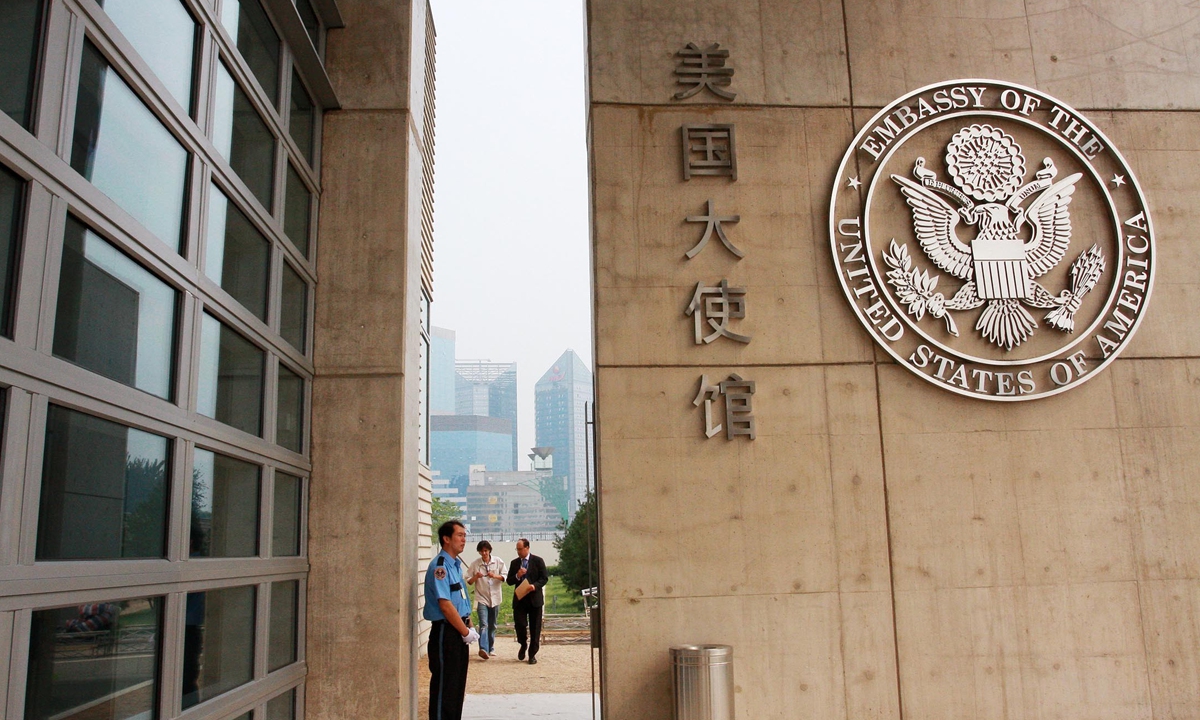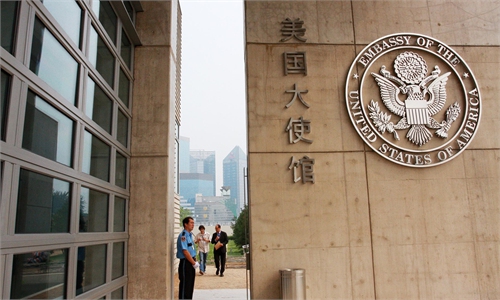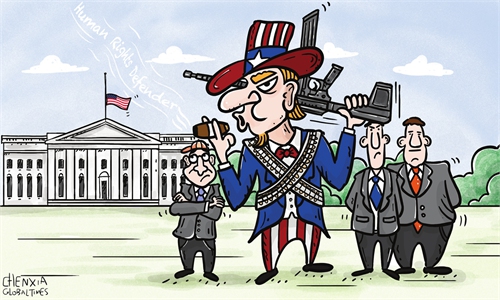US embassy post on ozone pollution in Beijing draws torrents of mockery online in contrast to PM2.5 post decade ago

US Embassy in China Photo: cnsphoto
The US embassy in China has started to post air quality data for Beijing again on Sina Weibo after several years. But unlike 10 years ago when their posts of PM2.5 data were applauded by many, their current practice has been greeted with mockery and criticism.
The embassy has posted for three days in a row. Its Tuesday post said ozone pollution is becoming severer in Beijing with a graphic of air ozone proportion from 2014 to 2020. The Wednesday post said the PM2.5 in past 24 hours was unhealthy for sensitive groups and the ozone "very unhealthy."
In 2011, the US embassy in Beijing posted data on the PM2.5 index of the areas around the embassy, making a splash on social media. A lot of people welcomed the practice and Chinese authorities soon added PM2.5 into their air monitoring.
Unlike 10 years ago when the US embassy successfully brought air pollution into public discussions, in the latest embassy post on Tuesday, the most liked comment was "Floyd was unable to breathe."
A netizen proposed that the Chinese embassy in the US publish a daily gunshot index while a Beijing resident surnamed Liu suggested the US embassy monitor radiation pollutants in Japan as they should "care about the health of people in their ally country."
"US: Japan's nuclear-contaminated wastewater is clean, but China's Xinjiang cotton is not," a Weibo user wrote sarcastically.
"If you had paid more attention to monitoring the virus at Fort Detrick [than ozone in Beijing], 600,000 American deaths could have been prevented," said another netizen.
One net user said the US embassy prompted the Chinese public to know more about PM2.5 and pay attention to air quality. The comment was liked by fewbut appeared at the top of the comments, which could have been because the embassy liked it, bringing it to the "top" of the comment list, according to Weibo's mechanism.
The contrast in the reaction came from a decaying US image due to its coercion of China in many fields in recent years. Different US presidents and secretaries of state have publicly lied about China, and the US government's failure in its epidemic response has also shocked Chinese people.
Comments related to discontent over the way the US dealt with COVID-19, including its indifference to lost lives, stockpiling of vaccines and continuous smears against China over the virus origins issue, made up the majority of the responses to the embassy post.
US-led attacks on Xinjiang cotton, with an attempt to smear China over human rights and strangle the Xinjiang economy, also infuriated Chinese people.
Many believe the information released by US authorities is no longer reliable and the country's credibility is bankrupt.
Chinese people, including Beijing residents, acknowledged the government's efforts to deal with pollution, including reducing coal consumption and optimizing the steel industry, and the achievements - air quality has improved dramatically in terms of PM2.5, nitrogen oxides and most other indicators.
Beijing from 2015 to 2020 had its PM2.5 level more than halved. A-level days reached 106 in 2020, compared with 52 in 2015, while severe pollution dropped from 46 to 10 days.
China also set a working target for reducing pollution caused by heating in northern China in winter and the ozone problem in summer.
The public acknowledges this progress and is aware of the US' attempts to use the environment to stir up conflicts in Chinese society, observers said.
Global Times


